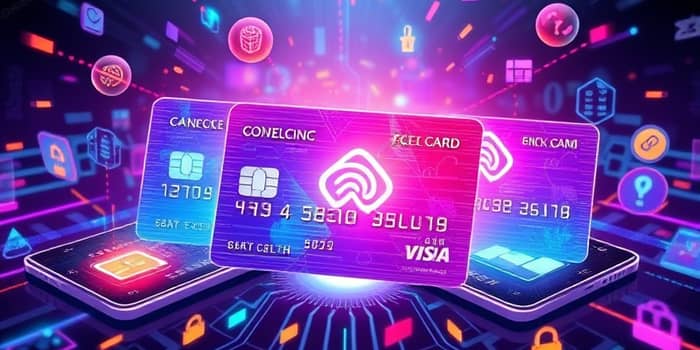
As we step into 2025, the world of credit and debit cards has transformed dramatically, reshaping how consumers and merchants interact. From bustling urban centers to remote rural outposts, the emphasis on speed, security, and personalization continues to drive innovation. In this article, we explore the seismic shifts that are defining the next era of payments, and how these advances promise to enhance everyday transactions.
Traditional methods, once reliant on magnetic stripes and PIN entries, are now giving way to contactless, digital-first solutions powered by advanced technologies. With total U.S. consumer debt hitting a record $14.3 trillion in 2025, there is also a growing focus on offering financial flexibility and responsible spending tools.
Contactless payments have become ubiquitous. Whether through a credit card equipped with NFC or a smartwatch, consumers enjoy frictionless, quick, touch-free payment experiences at every checkout. The pandemic simply accelerated a shift already in motion, prioritizing hygiene and speed in high-traffic environments.
Innovations such as Visa’s Tap to Phone initiative empower small merchants to accept contactless transactions using their existing smartphones. Meanwhile, contactless-only terminals for vending machines, parking meters, and transit gates emphasize truly uninterrupted purchase journeys.
As payment methods evolve, so too do techniques used by fraudsters. In response, card issuers are layering in multiple security measures to safeguard every transaction. Biometric authentication—ranging from fingerprint and facial scans to voice recognition—eliminates reliance on static PINs or signatures.
These measures, supported by end-to-end encryption, deliver enhanced protection of payment data while preserving the seamlessness consumers now expect. Even marginal savings of seven to eight seconds per transaction add up to significant improvements in efficiency and satisfaction for both shoppers and merchants.
Beyond contactless and biometric measures, several cutting-edge trends are redefining credit cards. Blockchain is emerging as a backbone for decentralized, secure transaction processing, improving transparency and reducing the risk of tampering. Meanwhile, an increasing number of cards now let users earn and spend cryptocurrencies directly, bridging the gap between digital assets and everyday commerce.
Visa’s Flexible Credential, often called the “Swiss Army Knife of payments,” allows toggling between credit, debit, prepaid, and commercial accounts with a simple app command. Over three million users in Japan already switch funding sources mid-transaction 70% of the time, illustrating the power of multi-currency support for cross-border travelers and diverse spending needs.
Personalization also drives consumer engagement. Roughly 25% of buyers cite loyalty points as their primary online purchase motivator, fueling the rise of personalized rewards and co-branded cards tailored to individual spending habits. Yet despite the buzz around Buy Now, Pay Later options, only 17% of users prefer them over traditional cards, underscoring why traditional credit cards with flexible repayment remain dominant.
As payment ecosystems grow more complex, regulators worldwide are tightening security and privacy standards. New compliance requirements govern how card data is stored, managed, and shared, placing a premium on encryption, consent management, and auditability.
Simultaneously, merchants—especially small businesses—benefit from reduced transaction fees and simplified acceptance methods. Even incremental improvements in processing time can yield marked gains in throughput and customer satisfaction.
What does the future hold? Contactless and mobile methods will become the default, while AI and biometric security grow ever more sophisticated. Flexible cards capable of toggling between accounts and currencies will redefine travel and cross-border commerce.
The boundaries between traditional and digital assets will blur further, as cryptocurrencies become standard reward options and merchant settlements. Embedded finance will continue its spread, with non-banking brands offering seamlessly integrated credit options at the point of need.
Ultimately, the payment landscape of tomorrow hinges on one principle: balancing speed, security, and personalization to deliver exceptional experiences for consumers and merchants alike. The innovations unfolding now are merely the first steps toward a truly unified, frictionless financial ecosystem.
By staying informed and embracing these changes, businesses can capitalize on new opportunities, and consumers can enjoy smarter, more secure ways to pay. The future of payments is here, and it promises a world where transactions are not just necessary, but truly empowering.
References













